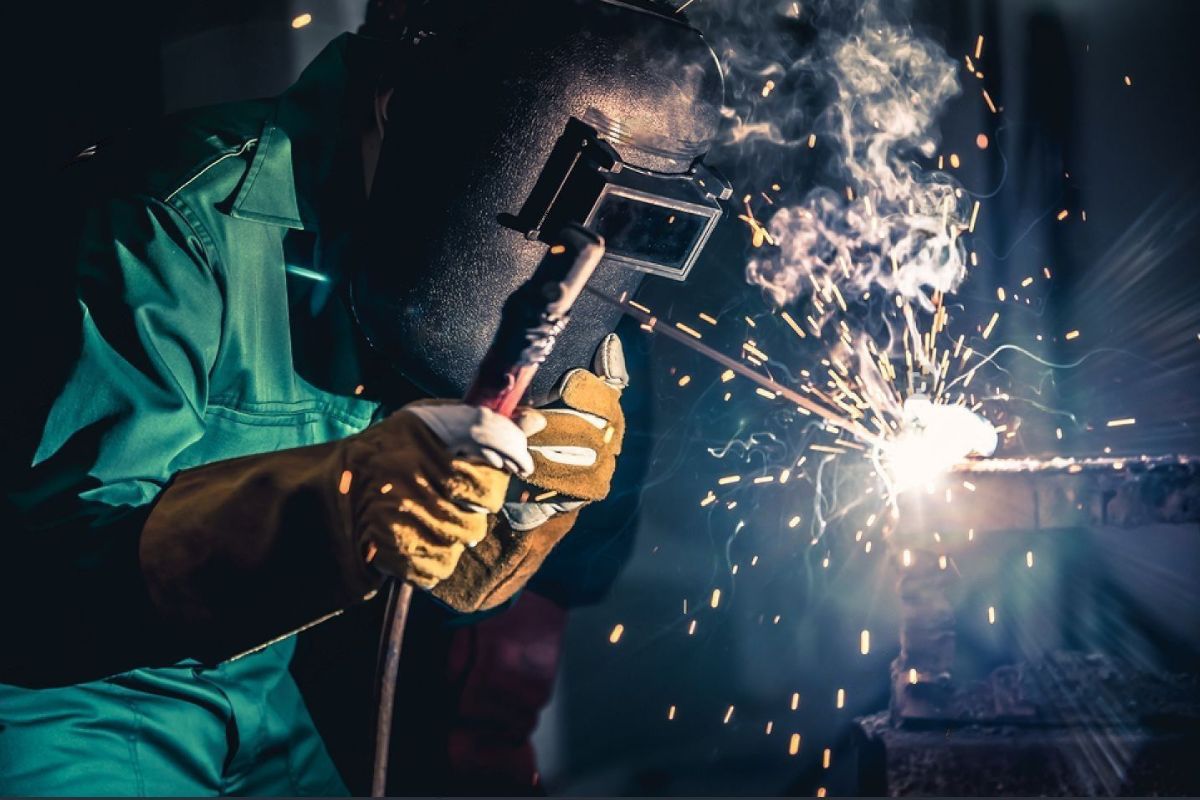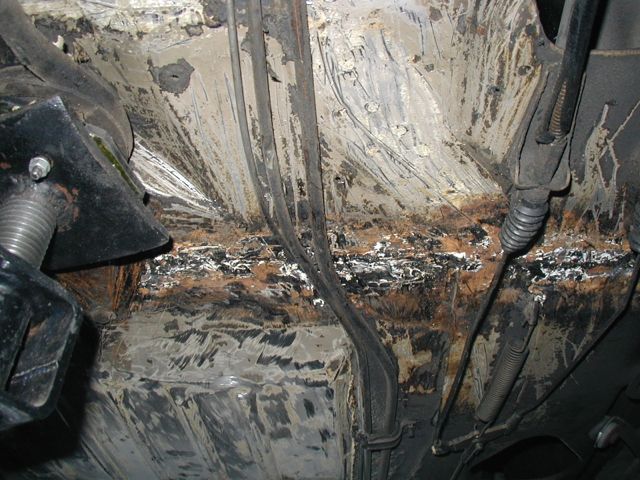Usual Welding Repair Service Issues and How to Address Them Successfully
Welding repairs often run into a variety of issues that can threaten the stability of the final product. Common problems consist of poor penetration, porosity, and misalignment, amongst others. Each problem provides special obstacles that call for specific techniques for resolution. Understanding these concerns is important for welders intending to improve their results and skills. This discussion will explore these typical welding repair issues and reliable methods to address them.
Poor Infiltration
Insufficient infiltration takes place when the weld metal falls short to completely fuse with the base product, resulting in weak joints and potential architectural failures. This issue frequently originates from inadequate heat input, inaccurate electrode angle, or improper welding rate. Welders may encounter insufficient penetration because of a mistake of the needed specifications for a specific product thickness or type. In addition, contamination on the base product's surface area can impede efficient bonding, aggravating the trouble. To resolve inadequate penetration, welders must guarantee suitable settings on their devices and maintain a tidy work surface area. Normal evaluation of welds is recommended to determine any shortages early, enabling for timely adjustments and the avoidance of endangered structural integrity in welded settings up.
Porosity
Porosity is a typical problem in welded joints that shows up as little gas bubbles caught within the weld steel. This issue can jeopardize the stability of the weld, causing decreased strength and prospective failing under stress and anxiety. Montana Mobile Welding and Repair Belgrade. Porosity usually occurs from contamination, wetness, or improper welding methods, which permit gases to get away into the liquified weld swimming pool. To attend to porosity, welders need to assure proper surface area preparation, preserve a clean workplace, and utilize ideal welding criteria. Additionally, picking the right filler material and protecting gas can alleviate gas entrapment. Normal inspection and screening of welds can help identify porosity early, assuring prompt rehabilitative activities are taken, therefore maintaining the top quality and integrity of the bonded structure
Imbalance
Misalignment in welding can emerge from numerous elements, consisting of inappropriate setup and thermal growth. Recognizing the origin is essential for effective resolution. Numerous modification strategies are readily available to realign elements and ensure structural stability.
Causes of Imbalance
Welding imbalance typically stems from a variety of underlying issues that can jeopardize architectural stability. One primary cause is improper fit-up of parts before welding, which can cause spaces and irregular surface areas. Variations in thermal expansion during the welding process can additionally result in distortion, particularly if the materials being signed up with have different coefficients of expansion. In addition, poor clamping and fixturing may fall short to hold components safely in place, causing activity during welding. Improperly kept equipment, consisting of welding devices and devices, may present inconsistencies in the weld grain, more adding to imbalance. Lastly, operator error, coming from insufficient training or experience, can additionally play a considerable duty in creating misaligned welds.
Adjustment Techniques Readily Available
Resolving imbalance successfully calls for a combination of corrective methods tailored to the details concerns at hand. One typical method is using jigs or components to hold elements in the proper placement during welding, guaranteeing regular placement. Additionally, pre-heating the materials can aid reduce distortion and enhance fit-up. For considerable misalignment, mechanical realignment strategies, such as using hydraulic jacks or clamps, can be utilized to fix the placement prior to welding. Post-weld heat therapy might likewise be needed to soothe tensions created by imbalance. Cautious evaluation and change throughout the arrangement phase can stop imbalance issues from ending up being considerable troubles, advertising a smoother welding procedure and enhancing total architectural integrity.
Distortion
Distortion is an usual obstacle in welding that can occur from various elements, including irregular heating and air conditioning. Recognizing the reasons for distortion is important for executing effective avoidance strategies. Resolving this problem not just boosts architectural integrity yet also enhances the general high quality of the weld.
Reasons for Distortion
When subjected to the extreme heat of welding, materials usually go through modifications that can result in distortion. This sensation largely arises from thermal growth and tightening during the welding process. As the weld area warms up, the material broadens; upon cooling, it contracts, which can produce interior stresses. In enhancement, irregular home heating across a work surface can worsen these stresses, leading to bending or flexing. The kind of product also plays a significant duty; steels with varying thermal conductivity and coefficients of expansion might respond in different ways, resulting in uncertain distortions. Moreover, poor joint design and insufficient fixturing can add to imbalance during welding, boosting the possibility of distortion. Recognizing these reasons is important for effective welding repair and prevention strategies.
Prevention Techniques
Efficient prevention techniques for distortion during welding concentrate on regulating heat input and ensuring appropriate joint design. Keeping a regular warm input helps to decrease thermal expansion and contraction, which can result in distortion. Utilizing strategies such as pre-heating the workpiece can additionally lower the temperature level slope, advertising consistent heating. Additionally, selecting ideal joint designs, such as T-joints or lap joints, can enhance security and minimize stress concentrations. Applying correct fixturing to secure the work surfaces in position better help in keeping alignment during the welding procedure. Finally, staggered welding series can disperse warm extra equally, preventing local distortion. By applying these methods, welders can considerably lower the probability of distortion and boost the general quality of their welds.
Splitting
Fracturing is an usual concern encountered in welding repairs, often arising from numerous variables such as incorrect cooling rates, product choice, or inadequate joint preparation. site link The event of fractures can greatly jeopardize the stability of the weld, causing potential failures throughout procedure. To address this issue, welders have to initially analyze the source, making certain that materials are compatible and appropriately picked for the certain application. In addition, regulating the cooling rate during the welding process is crucial; quick air conditioning can induce stress and lead to cracking. Correct joint design and prep work additionally add to reducing the risk. Applying these approaches can improve weld quality and durability, best stick welder for beginners eventually reducing the probability of cracking in completed weldments.

Incomplete Fusion
A significant concern in welding repair services is incomplete fusion, which occurs when the weld metal does not sufficiently bond with the base material or previous weld passes - Welding. This defect can cause weaknesses in the joint, possibly compromising the integrity of the welded structure. Variables contributing to incomplete fusion consist of inadequate heat input, improper welding method, and contamination of the surface areas being signed up with. To address this concern effectively, welders need to guarantee correct pre-weld cleansing and surface preparation, along with readjust their welding parameters to accomplish adequate penetration and combination. Normal inspection throughout the welding process can also aid identify incomplete fusion early, allowing for timely rehabilitative steps to boost the total top quality of the weld
Overheating
While welding repairs can boost structural stability, overheating offers a substantial obstacle that can lead to material deterioration. Excessive warmth throughout welding can alter the mechanical residential or commercial properties of metals, causing reduced toughness, increased brittleness, and bending. This phenomenon is specifically vital in high-stress applications where architectural dependability is vital. Recognizing getting too hot can entail aesthetic evaluations for staining or distortion, in addition to keeping track of temperature level during the welding procedure. To minimize the risks linked with overheating, welders should use proper methods, such as regulating warmth input, readjusting traveling speed, and using suitable filler products. Furthermore, carrying out pre- and post-weld heat treatments can aid restore product properties and boost the general high quality of the repair service, ensuring lasting performance and safety and security.
Often Asked Questions
What Are the Common Signs of a Welding Issue?

How Can I Examine My Welds for Quality?
To evaluate welds for top quality, one can make use of visual assessments, ultrasonic screening, and radiographic techniques. Each strategy ensures architectural honesty, identifies issues, and validates adherence to defined requirements, inevitably improving the reliability of the bonded joints.
What Safety and security Preventative Measures Should I Take While Welding?
When welding, one ought to focus on safety by putting on appropriate personal safety tools, making sure correct ventilation, securing combustible products away, maintaining a tidy work space, and knowing environments to avoid injuries and crashes.
Can I Fix a Weld Without Redoing the Entire Joint?
Fixing a weld without redesigning the whole joint is possible, depending on the damages (Montana Mobile Welding and Repair Welding). Techniques such as grinding, including filler material, or making use of a welding procedure can effectively deal with specific flaws while maintaining the surrounding framework
What Tools Are Important for Reliable Welding Repair Works?
Crucial tools for reliable welding fixings consist of a welding device, cord brush, mill, safety gear, clamps, and filler products. Each device plays a crucial duty in making certain quality and safety during the fixing process. Porosity commonly occurs from contamination, wetness, or incorrect welding er316l methods, which permit gases to escape into the liquified weld pool. Poorly kept tools, consisting of welding makers and devices, might present disparities in the weld grain, more adding to misalignment. When subjected to the extreme warm of welding, products frequently go through modifications that can lead to distortion. Fracturing is an usual concern encountered in welding repairs, often resulting from numerous variables such as incorrect cooling prices, material option, or inadequate joint preparation. A considerable concern in welding repair services is insufficient combination, which happens when the weld metal does not effectively bond with the base product or previous weld passes.
Comments on “Repairing cracking in welded joints: tips from Montana Mobile Welding and Repair Fabrication”